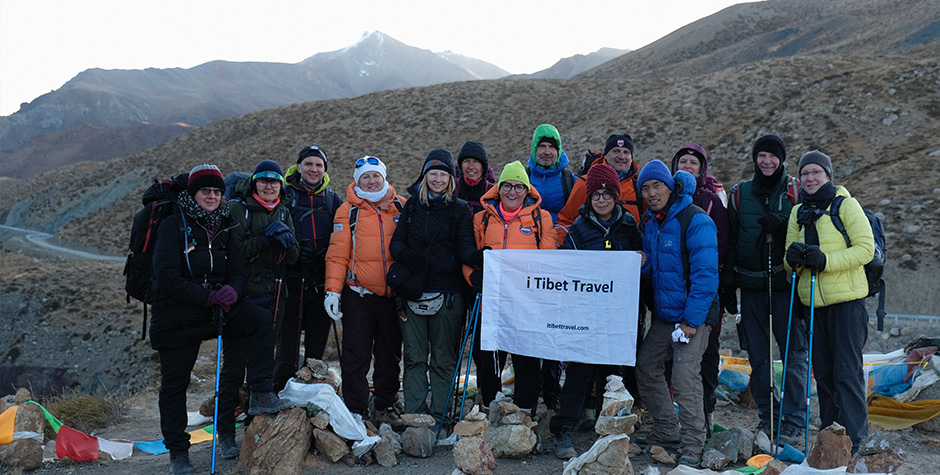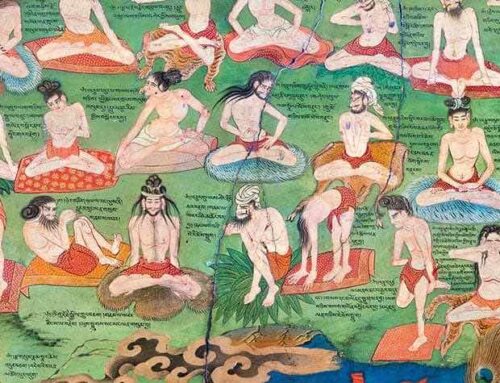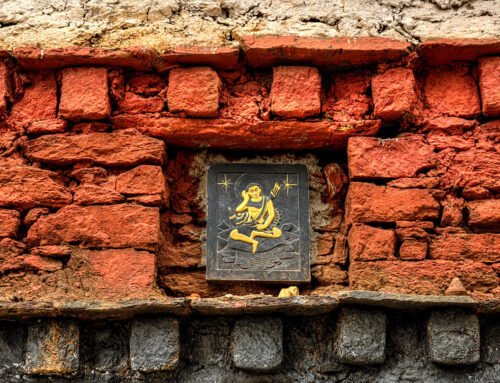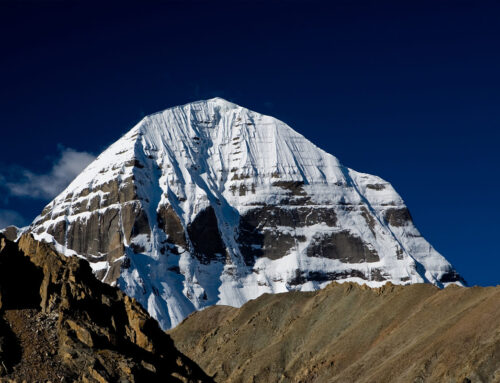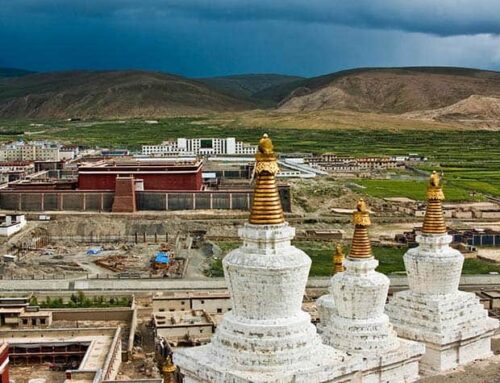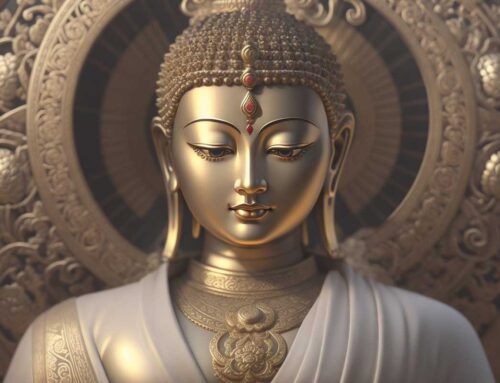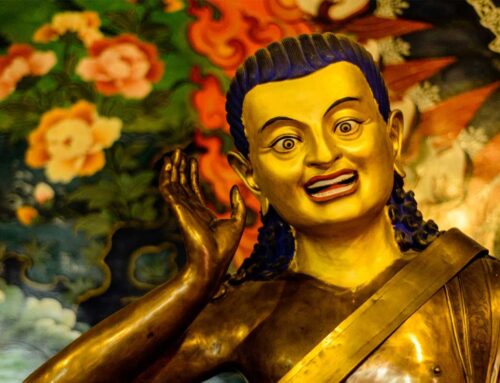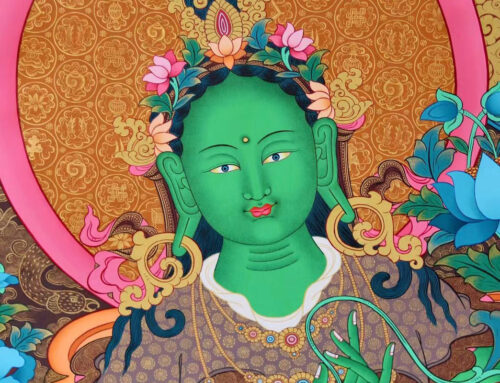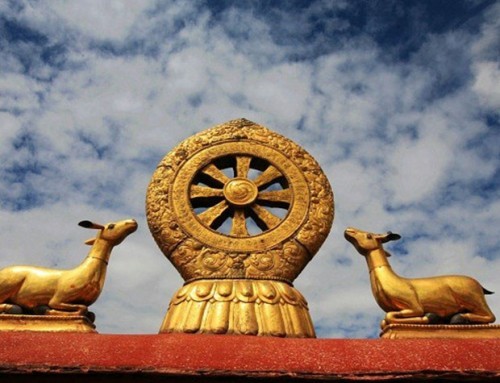Tibetan Buddhist Stupa is very attractive towards travelers in Tibet. Many of our visitors are asking questions about the different shape and forms of Stupa during their visit to Tibet. Today we are willing to share this information We have learned about the Stupa.
Stupas are originated in India during the pre-Buddhist era as a burial mound. Traditionally Hinduism practice to burn the death to cremate. But for the higher priest, they bury as the high priest would have already done the fire purification. The stupa was also built on the place where the kings and nobles were burned. After the death of the high priest, his stupa becomes the pilgrimage place for his followers. As Buddhist has derived many of its cultures from Hinduism. So it the culture in-built the Stupa.
The design of Tibetan Buddhist Stupa is said to have preached by Buddha himself during his lifetime. During the lifetime of Buddha different Stupa were built by devotees to mark the place of the critical event in his lifetime. After his Parinirvana and cremation, a dispute arose among the various Indian ethnic groups over the possession of his Ashes as relics. The relics are later divided equally among eight claimants tribes. Thus eight Stupas are built in eight capital of their Kingdom, which is known as eight relic stupa of the eight cities.
Later the Buddhism spread into other eastern Asia and North Asia countries including China, Russia, Burma, Thailand and so on. As time passes these culture has developed their own version of the design of the stupa. The Original Stupa design as said by Buddha is still visible in the Central Indian state of Madhya Pradesh in Sanchi.
Although the original purpose of Tibetan Buddhist Stupa was to enshrine the relics of great spiritual teachers, they are also constructed for many other auspicious reasons. At the Sacred site they commemorate the significant events; at cross-road, mountain pass, and on the pilgrimage routes they offer a focus for religious devotion. As the stabilizer, removers of the hindrance, illness, and epidemics, they bring peace to the strife-torn land, longevity of local inhabitants and a sense of harmony to the environment. Gyantse Kumbum Stupa contains 108 Chapels where also all the deities and Buddha in Tibetan Buddhism are here.
In Tibet, mummified bodies of highly realized Masters are sometimes enshrined in the lavishly gilded and jeweled stupa. Three most popular tomb stupas in Tibet are; the tomb stupa of fifth Dalai Lama in Potala Palace, tomb stupa of Lama Tsongkapa (the founder of Gelugpa sect) in Ganden monastery in Lhasa and the tomb stupa of tenth Panchen Lama in Tashi Lhunpo monastery in Shigatse. The Large reliquary stupa of great fifth Dalai Lama is glided with over three and a half tons of gold leaf and embellished with thousands of large precious stone and pearls.
The Tibetan Buddhist Stupa has three parts, Throne base, drone, and Harmika spire. Symbolize the body, speech, and mind of Buddha. The unit of Stupa represents the greatest nature of enlightened bell-shaped.
Types of Tibetan Buddhist Stupa
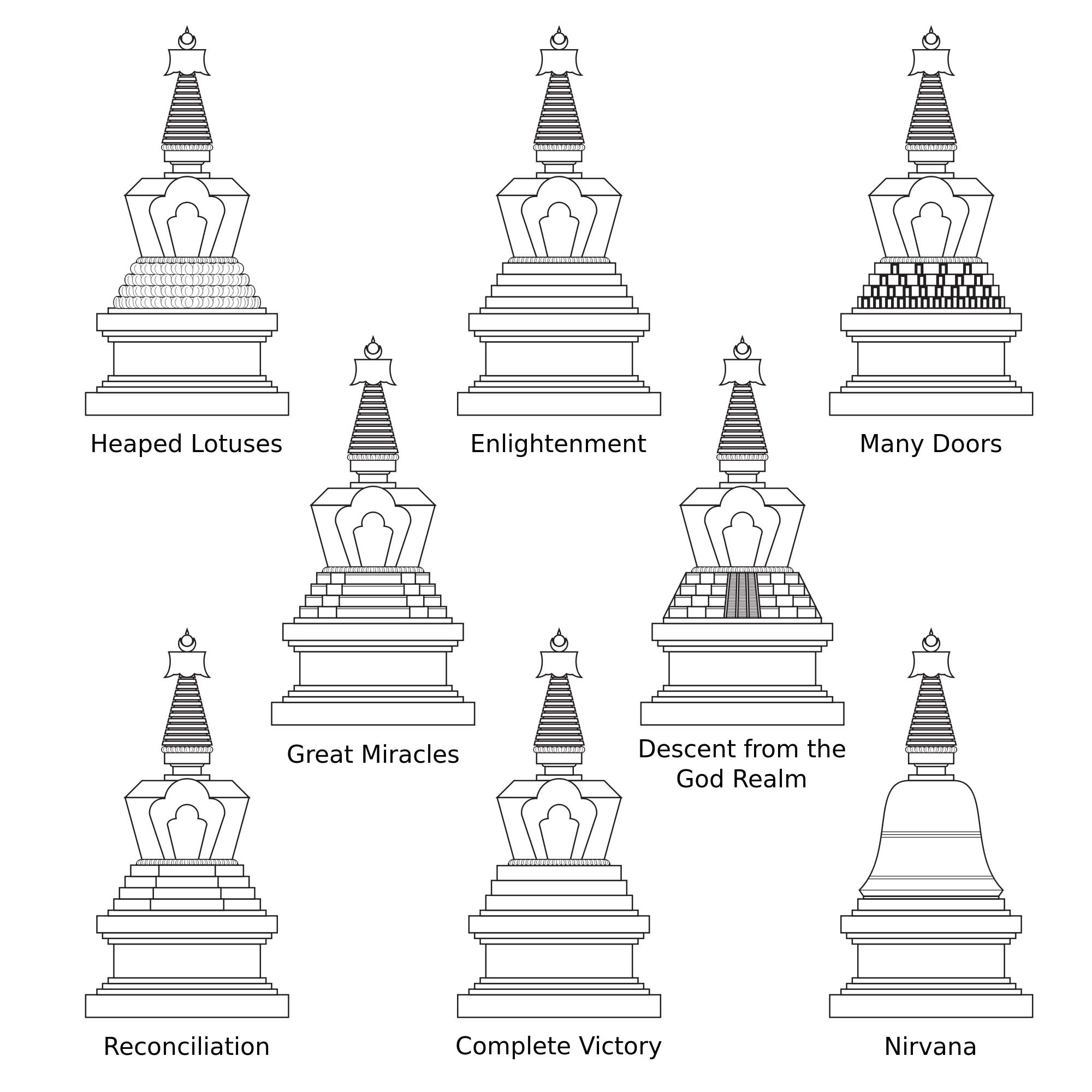
1) Lotus Blossom Stupa
The stupa of heaped lotuses or Lotus blossom stupa, commemorate the Buddha birth in the royal Lumbini Garden on the seventh day of the fourth lunar month in the year 563 BC. His father Shuddhodana, is said to have erected a stupa in this design to commemorate this event. At birth Buddha took seven steps in each direction from which lotus sprang, symbolizing his immediate resolve to embark on the path of four immeasurables. Four steps of this stupa are circular and decorated with a lotus petal design. A tradition also exists in constructing seven heaped lotus steps to represent Buddha’s first action. This stupa is also known as the birth of the Sugata Stupa.
2) Stupa of the Conquest of Mara.
This stupa is also known as the Enlightenment Stupa, commemorate the Buddha’s defeat of the Temptation and attack of the hosts of Mara under the Bodhi tree at Bodh Gaya, when he was thirty-five years old. King Bimbisara is said to have erected a stupa in this design. This stupa has traditional unadorned four square steps, often with a slight overhang along the top of each other.
3) Stupa of many doors.
The stupa of many doors commemorates the Buddha’s first turning wheel of Dharma at the deer park in Sarnath near Varanasi when he was thirty-five years old. his first five mendicant disciples are said to have built a stupa in this design. Each four square steps is decorated with many doors frames which express the many avenues or method of Buddha’s teachings. A Series of four, six and twelve doors on each side of the steps symbolize the four noble truth, six perfections, the noble eightfold path and the twelve links in the chain of dependent origination.
4) Stupa of Great Miracle
Great miracles stupa of the great miracle, commemorate the Buddha’s display of inconceivable miracles in the first half of a lunar month in Shravasti, when he was fifty years old. Here he overpowered the Maras and heretic at the Jetavana Grove. The stupa of miracles or conquest of the tirthikas was built by the Lichvi tribe to commemorate this event. The stupa of Miracle has the projecting central section on each of its four steps and side, which also project slightly by one-third of the height.
5) Stupa of descent from the god realm.
The stupa of the descendant from God realm is to commemorate Buddha’s descent from heaven of thirty-three gods when he was forty-two years old. Where he spent the summer retreat in Tushita heaven teaching the Dharma to the reincarnation of his mother. to repay her kindness in having borne him just before she died.
He descended at the city of Sankasya and the locals built a stupa in this design to commemorate the event. The descent from God realm stupa is characterized by a central projection in each of its four sides containing a triple ladder or projected steps. The central projections follow the plan miracle stupa with middle buttresses which project by one-third of their height. The projected step which forms a triple receding ladder was said to have been constructed for the Buddha by the celestial architect Vishwakarma.
They often have three rows of thirty-three steps symbolizing the god realms. Laddered stairways in this design are often built at the temple entrances; the central stairways is reserved exclusively for distinguishing or incarnate Lamas. the right stairways are for the ordained monks, and the left is for the lay practitioner. triple flight of wooden stairs at the Potala Palace are very worn down in their right and left section, as this section is reserved only for the Highest Lama.
6) The Stupa of reconciliation.
The stupa of reconciliation, commemorate Buddha’s reconciliation of the disputing faction within Sangha which had been divided by the enmity of his cousin Devadatta. Buddha reunited the Sangha at the Velvuvana Bamboo grove at Rajagriha and the local inhabitants of the kingdom of Magadha constructed a stupa of this design. The reconciliation stupa is characterized by its four octagonal steps with equal sides. The various symbolic meaning is given for the four levels of eight-sided steps. which totals thirty-two in number.
7) The stupa complete victory.
The stupa of complete victory, commemorate buddha prolongation of his life by three months. This event occurred at the city of Vaisali when Buddha was eighty years of age by the supplication of the lay devotees Tsundra. The celestial beings are said to have built the stupa in this design. The complete victory stupa is characterized by having only three steps, which are circular and Unadorned.
8) The Stupa of Nirvana.
Nirvana Stupa, Stupa of Nirvana, commemorate Buddha’s passing away beyond sorrow into his final Parinirvana at Kushinagara between two sal tree when he was eighty years old. The Malla tribe of Kushinagara erected the stupa in this design. The Nirvana Stupa has a circular bell-shaped dome. It rests directly on the circular base of the ten virtues with no ascending steps. Usually, The stupa does not have an ornament. Except occasionally when the base or mouth of the dome is decorated with the ornate ring of inscribed circles. Its simplicity and the absence of the step symbolized Buddha’s complete absorption into Parinirvana, where all conceptual qualities merge into the unqualified state of pure emptiness as the Dharmakaya.
All the originals Tibetan Buddhist Stupa built during the time of Buddha didn’t survive intact today. Where ever you go in the Buddhist world you will find the sets of eight stupas. Please learn more on Wikipedia
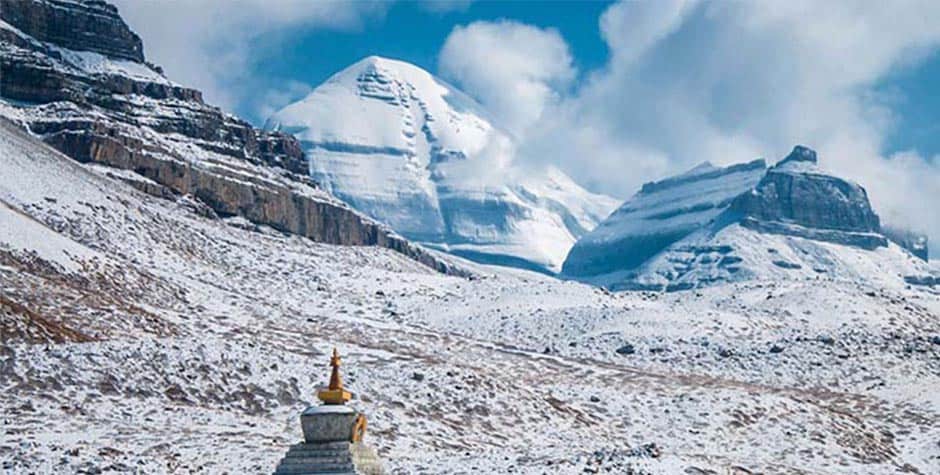
About Tibet Travel & Tours
Tibet Travel & Tours is a local travel agency in Tibet that offers unique and authentic experiences to travelers from all around the world. As a leading tour operator in Tibet, we provide high-quality Tibet Travel services that are tailored to our clients’ needs and preferences.
Our team of experienced and knowledgeable professionals strives to ensure that our clients have a hassle-free and memorable trip in Tibet. We specialize in various types of tours, including cultural tours, trekking and hiking tours, and adventure tours.
Our commitment to providing exceptional service has earned us a reputation as one of the best local travel agencies in Tibet. Contact us today to plan your unforgettable trip to Tibet.
Explore Tibet with a local Tibetan Travel Agency
If you’re looking to explore Tibet, starting your journey with a reputable Tibetan travel agency in Tibet is crucial. Tibet Travel & Tours is a great choice to begin your adventure with their extensive knowledge of the region and commitment to responsible tourism.
Their Tibet tour packages cater to a range of interests and budgets, making it easy to plan a trip that suits your needs. Before embarking on your tibet tour, it’s essential to have the right Tibet travel information and necessary documents, including a Tibet travel permit.
The Tibet Travel Planner provided by i-Tibet travel is an excellent resource to plan your trip, including tips on what to pack, where to stay, and what to see.
For beginners, the “About Tibet” guide provided by i-Tibet travel offers a comprehensive overview of the region’s history, culture, and top attractions. So, start your Tibet travel plan here with i-Tibet travel and discover the magic of Tibet for yourself.

